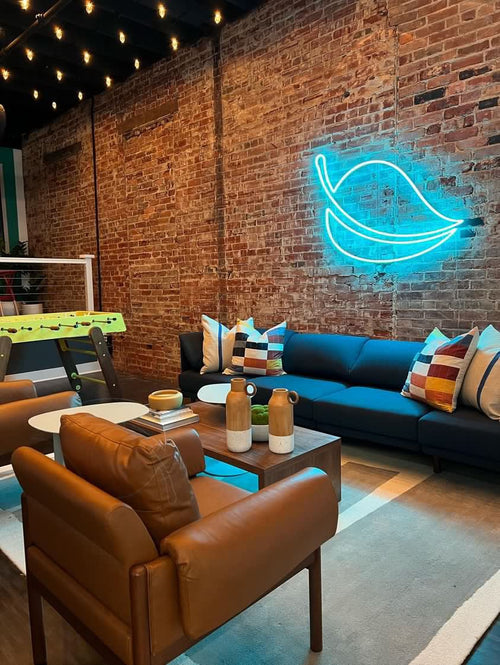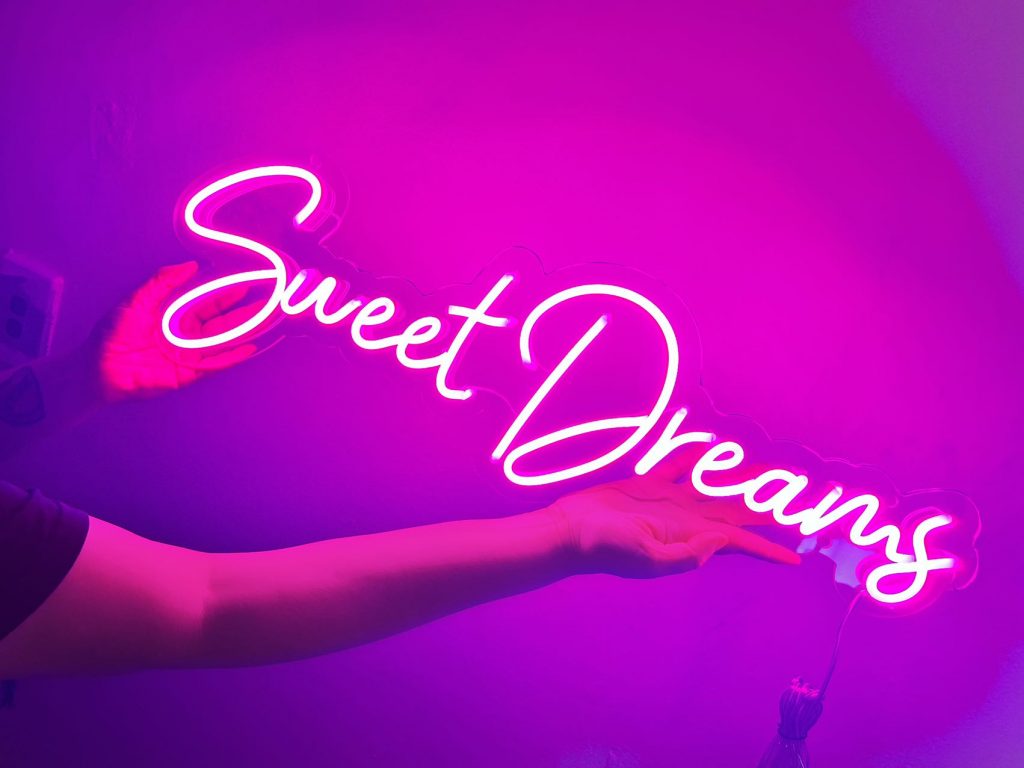Neon light signs have illuminated the streets of cities and towns for over a century, becoming symbols of modernity, creativity, and advertising. Originally developed in the early 20th century, these vibrant signs quickly captured public imagination and became a staple in urban landscapes. This exploration will delve into the history, significance, design, and contemporary uses of neon signs, answering the question of their relevance in today’s society.
Historical Background
The Invention of Neon Lighting
The history of neon signs begins in 1898 when French chemists Georges Claude and Jacques Babinet isolated the gas neon. Claude’s innovation in 1902 led to the development of the first neon lamp, but it wasn’t until 1910 that he introduced neon to the public by creating the first neon sign for a Parisian barber shop. This innovative use of neon gas, which emits a bright reddish-orange glow when electrified, marked the beginning of a new era in advertising.
The Rise of Neon Signs
The 1920s saw the proliferation of neon signs across the United States, particularly in cities like Las Vegas and New York. Neon became synonymous with the vibrant nightlife and burgeoning commercialism of the Jazz Age. By the late 1930s, neon signs were everywhere, from restaurants to theaters, captivating onlookers with their eye-catching illumination and colorful displays.
The Significance of Neon Signs

Cultural Symbolism
Neon light signs have transcended their utilitarian purpose as mere advertising tools to become cultural icons. They symbolize the allure of urban life, embodying the spirit of innovation and creativity. Cities like Las Vegas and Times Square are renowned for their neon signs, attracting tourists and locals alike. These signs evoke nostalgia, reminding us of a time when cities were characterized by their vibrant street life and neon glow.
Artistic Expression
Beyond their commercial use, neon signs have become a medium for artistic expression. Artists and designers have embraced neon lighting to create visually stunning installations that provoke thought and engage viewers. Neon art often explores themes of identity, social commentary, and the intersection of technology and art. The use of neon in galleries and public spaces has elevated it from simple signage to a legitimate art form.
Design Elements of Neon Signs
Color and Shape
One of the most distinctive features of neon signs is their use of color and shape. Neon gas can produce a range of colors depending on the type of glass and phosphor coating used. The most common colors include red, blue, green, yellow, and pink. The combination of colors, shapes, and sizes allows for endless creative possibilities, enabling designers to craft unique and memorable signs.
Typography
Typography plays a crucial role in the effectiveness of neon signs. The choice of font can convey a brand’s personality, evoke emotions, and attract customers. Bold, cursive, or playful fonts can be employed to create a specific ambiance. The illumination of the sign enhances the visibility and readability of the text, making it an integral aspect of design.
Contemporary Uses of Neon Signs
Advertising and Branding
Despite the advent of digital technology, neon signs remain relevant in advertising and branding. Many businesses, especially in the hospitality and entertainment industries, utilize neon signs to create an inviting atmosphere. The retro aesthetic of neon can evoke a sense of nostalgia, making establishments more appealing to customers. Additionally, neon signs can differentiate a brand in a crowded market, as their unique look stands out against traditional signage.
Home Decor
In recent years, neon signs have gained popularity in home decor. Many people incorporate neon art pieces into their living spaces, adding a modern touch to their interiors. Customized neon signs with personal messages or names are especially sought after, allowing individuals to express their personality and style. The versatility of neon lighting makes it suitable for various settings, from bedrooms to home offices.
Events and Celebrations
Neon light signs are also commonly used in events and celebrations. Whether it’s a wedding, birthday party, or corporate event, neon signage can enhance the ambiance and create a lively atmosphere. Many event planners incorporate neon elements into their designs, using them as backdrops or focal points to add a unique flair to the occasion.
Environmental Considerations
While neon signs are celebrated for their aesthetic appeal, they also raise environmental concerns. Traditional neon signs require significant energy to operate, leading to increased carbon footprints. However, advances in technology have led to the development of energy-efficient LED neon signs, which mimic the look of traditional neon while consuming less energy. This shift toward sustainable practices is essential in addressing the environmental impact of signage.
Conclusion
Neon light signs are more than just bright advertisements; they represent a rich history, cultural significance, and artistic expression. From their humble beginnings in the early 20th century to their contemporary uses in branding and home decor, neon signs continue to captivate audiences. As society evolves, so too will the role of neon in our lives, ensuring that its glow remains a vibrant part of our urban landscapes.




